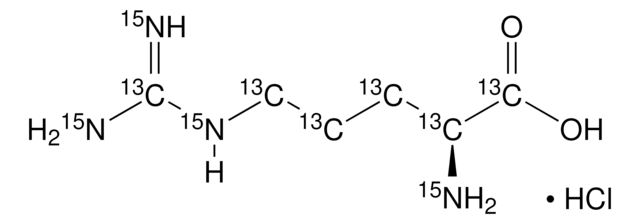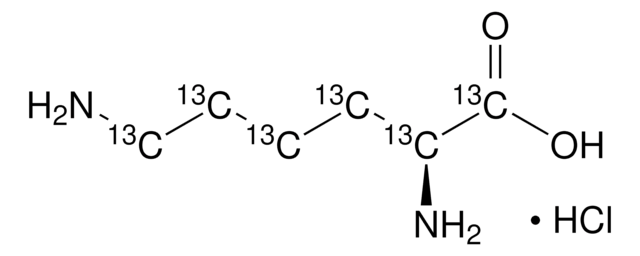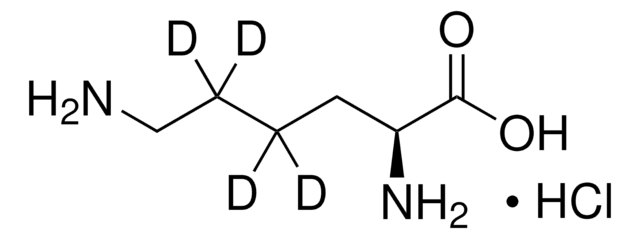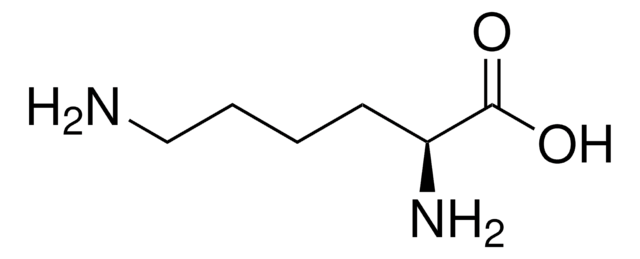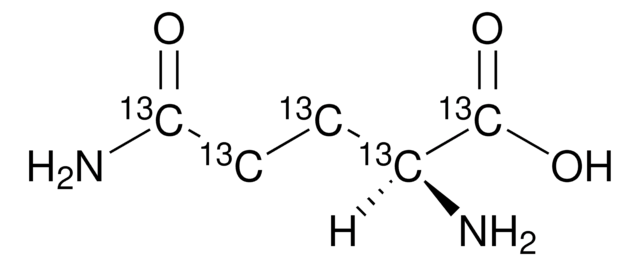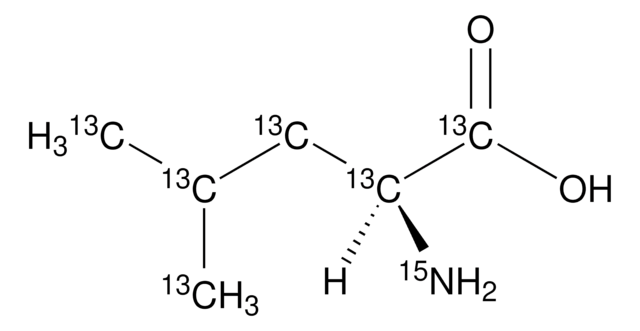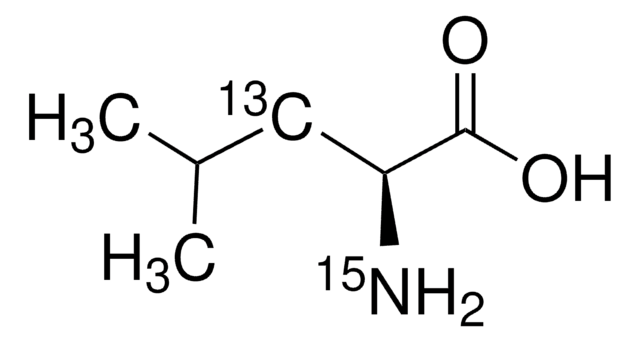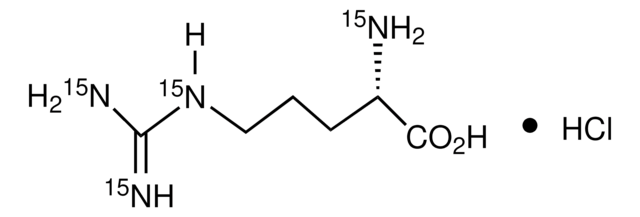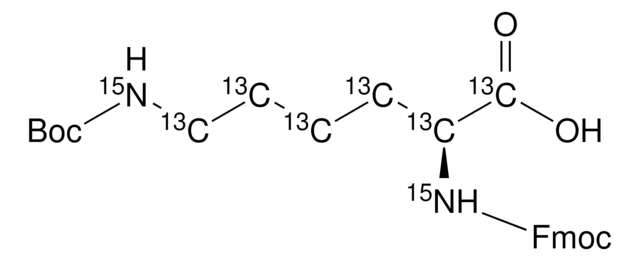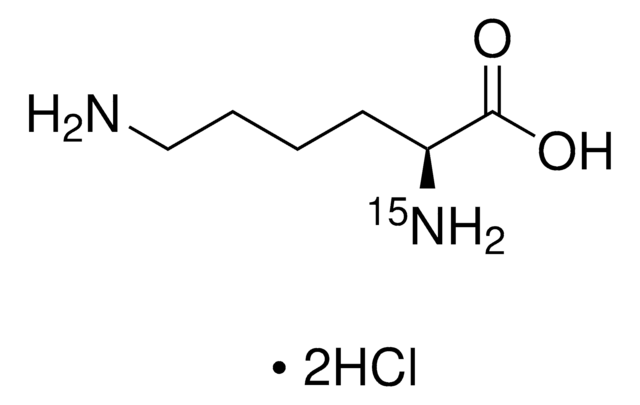608041
L-Lysine-13C6,15N2 hydrochloride
99 atom % 13C, 99 atom % 15N, 95% (CP)
Sinónimos:
SILAC Amino Acid, (S)-2,6-Diaminohexanoic acid-13C6,15N2 hydrochloride, 13C and 15N Labeled Lys, 13C and 15N Labeled lysine hydrochloride
About This Item
Productos recomendados
pureza isotópica
99 atom % 13C
99 atom % 15N
Nivel de calidad
Ensayo
95% (CP)
Formulario
solid
actividad óptica
[α]25/D +20.7°, c = 2 in 5 M HCl
técnicas
bio NMR: suitable
protein expression: suitable
mp
263-264 °C (dec.) (lit.)
cambio de masa
M+8
cadena SMILES
Cl.[15NH2][13CH2][13CH2][13CH2][13CH2][13C@H]([15NH2])[13C](O)=O
InChI
1S/C6H14N2O2.ClH/c7-4-2-1-3-5(8)6(9)10;/h5H,1-4,7-8H2,(H,9,10);1H/t5-;/m0./s1/i1+1,2+1,3+1,4+1,5+1,6+1,7+1,8+1;
Clave InChI
BVHLGVCQOALMSV-GSMNGUNQSA-N
Descripción general
Aplicación
- L-Lysine-13C6,15N2 hydrochloride has been used in pSILAC (pulsed stable isotope labeling by amino acids in cell culture) mass spectrometry to study protein profile in cells transfected with microRNAs.
- It has been used in SILAC isotopic labeling for the characterization of lysine racemase.
- It has been used in SILAC labeling for phosphoproteomic measurements in neuro-2a cells treated with and without GFKP-19 (2-pyrrolidone derivative).
Envase
Producto relacionado
Código de clase de almacenamiento
11 - Combustible Solids
Clase de riesgo para el agua (WGK)
WGK 3
Punto de inflamabilidad (°F)
Not applicable
Punto de inflamabilidad (°C)
Not applicable
Elija entre una de las versiones más recientes:
¿Ya tiene este producto?
Encuentre la documentación para los productos que ha comprado recientemente en la Biblioteca de documentos.
Los clientes también vieron
Contenido relacionado
La estructura de las proteínas proporciona información valiosa que puede utilizarse para inferir la función de la proteína. El estudio de la estructura de las proteínas y la cartografía de las interacciones proteicas, los niveles de expresión y su ubicación permiten la identificación de biomarcadores de enfermedad y posibles dianas farmacológicas para el tratamiento terapéutico.
Protein structure analysis aids in identifying disease biomarkers and drug targets crucial for therapeutic treatments.
Nuestro equipo de científicos tiene experiencia en todas las áreas de investigación: Ciencias de la vida, Ciencia de los materiales, Síntesis química, Cromatografía, Analítica y muchas otras.
Póngase en contacto con el Servicio técnico